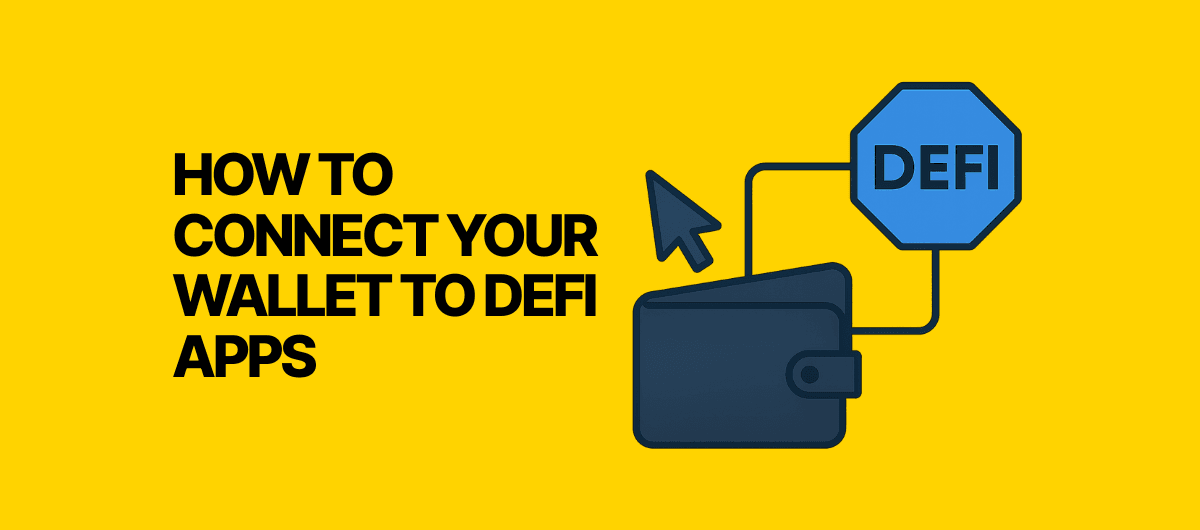What Is a DeFi Wallet? (MetaMask, Rabby, Trust) Beginner’s Guide 2025
Complete beginner’s guide to DeFi wallets in 2025: what they are, how they work, main types (MetaMask, Rabby, Trust Wallet), benefits, risks, and how to choose the right one.

Hey, it’s Lanzo 👋
If you’re diving into DeFi (Decentralized Finance), the very first tool you’ll need is a DeFi wallet.
Without a wallet, you can’t connect to apps, hold tokens, or earn from DeFi protocols. Think of it as your digital backpack for the open blockchain world.
In this guide we’ll cover:
- What a DeFi wallet actually is
- The difference between custodial & non-custodial wallets
- Popular examples: MetaMask, Rabby, Trust Wallet
- Benefits & risks
- How to pick the right one for your needs
- And some tips to stay safe 🔒
Let’s jump in.
What Is a DeFi Wallet? 👜
A DeFi wallet is a crypto wallet that gives you direct access to decentralized apps (dApps).
Unlike exchange wallets (e.g., Bybit or Binance), a DeFi wallet is:
- Non-custodial → you hold your own private keys.
- Permissionless → connect directly to dApps like Uniswap, Aave, Curve.
- Multichain → many support Ethereum, Polygon, Arbitrum, Solana, and more.
✅ Lanzo Tip: If you don’t control the keys, you don’t control the coins. DeFi wallets make you the true owner.
Custodial vs Non-Custodial ⚖️
There are two main types of wallets:
Custodial (e.g., exchange wallet):
- You log into Bybit, Coinbase, or Binance.
- They hold your keys.
- Easy but less control.
- You own your keys (seed phrase).
- No middleman.
- Needed for DeFi apps.
If DeFi is the open internet of money, non-custodial wallets are your browser.
👉 Related: How to Protect Your Recovery Phrase
Popular DeFi Wallets in 2025 🔥
MetaMask 🦊
- The OG of Ethereum wallets.
- Browser extension + mobile app.
- Supports Ethereum, Layer-2s, many EVM chains.
- Massive ecosystem support.
✅ Pro: Widely accepted everywhere.
⚠️ Con: Can get heavy, requires gas fees (ETH).
Rabby 🐰
- Newer wallet focused on smoother DeFi UX.
- Shows transaction previews (what you’re actually signing).
- Auto-switches networks.
- Gaining popularity with DeFi traders.
✅ Pro: Safer transaction signing.
⚠️ Con: Still newer, less adoption than MetaMask.
Trust Wallet 🔵
- Owned by Binance, but non-custodial.
- Mobile-first wallet, supports 70+ blockchains.
- Easy token swaps inside the app.
- Great for beginners.
✅ Pro: Multi-chain, beginner friendly.
⚠️ Con: Some features tied to Binance ecosystem.
Why Use a DeFi Wallet? 🌍
- Access dApps: trade, lend, borrow, stake directly.
- Full control: you hold your keys, not an exchange.
- Multichain support: DeFi isn’t just on Ethereum anymore.
- Privacy: no KYC required to connect.
Think of it like your universal login for Web3.
Risks of DeFi Wallets ⚠️
- Losing your seed phrase = losing funds.
- Phishing attacks → fake websites tricking you to sign.
- Gas fees → some chains can be expensive.
- Compatibility → not all wallets support all blockchains.
⚠️ Lanzo Warning: Always triple-check the URL before connecting your wallet. Fake sites can drain your funds in seconds.
How to Choose the Right Wallet 🛠️
- Beginner? → Try Trust Wallet.
- Active DeFi trader? → Go with Rabby.
- Want the most supported wallet? → MetaMask.
- Large amounts? → Combine with a hardware wallet like Ledger.
✅ Lanzo Tip: You can use multiple wallets. One for daily transactions, one cold (Ledger) for savings.
Getting Started With a DeFi Wallet 🚀
- Download from official website/app store.
- Create a wallet → write down your 12/24 word seed phrase.
- Add funds (buy crypto on Bybit, then transfer).
- Connect to a DeFi app (Uniswap, Aave, Curve).
- Approve and start exploring.
That’s it — you’re in DeFi.
👉 Related: How to Set Up Your Ledger Nano X (Step by Step)
Future of DeFi Wallets (2025–2030) 🔮
- More account abstraction → no more seed phrases, social recovery instead.
- Better UX → easier for non-technical users.
- Multi-chain by default → one wallet, all chains.
- More security layers → hardware + software combined.
By 2030, DeFi wallets could look as normal as today’s PayPal or Apple Wallet.
FAQ
Yes, MetaMask remains safe if downloaded from official sources. For extra security, connect it with a hardware wallet like Ledger.
Start Your DeFi Journey 🚀
Here’s how to get started safely today:
Buy Crypto on Bybit
Purchase Bitcoin, Ethereum, and stablecoins — ready to send to your DeFi wallet.
This is an affiliate link. If you buy, Lanzo may earn a commission at no extra cost to you.
⚡ Lanzo Tip: Always start with small amounts when testing a new wallet. Once you’re confident, scale up.
Keep Your Keys Safe 🔒
The golden rule of crypto: Not your keys, not your coins.
That’s why a hardware wallet is the ultimate partner for DeFi wallets.
Ledger Nano X
Protect your crypto and DeFi assets with the most trusted hardware wallet. Works with MetaMask, Rabby, and Trust.
This is an affiliate link. If you buy, Lanzo may earn a commission at no extra cost to you.
(This post contains affiliate links — supporting Lanzo at no extra cost to you.)
You might also like
Ready to start?
Begin with Lanzo’s crypto 4-step starter pack — your safe path into crypto.
Start the 4-Step PackNot financial advice. Based on public sources. As of today.

